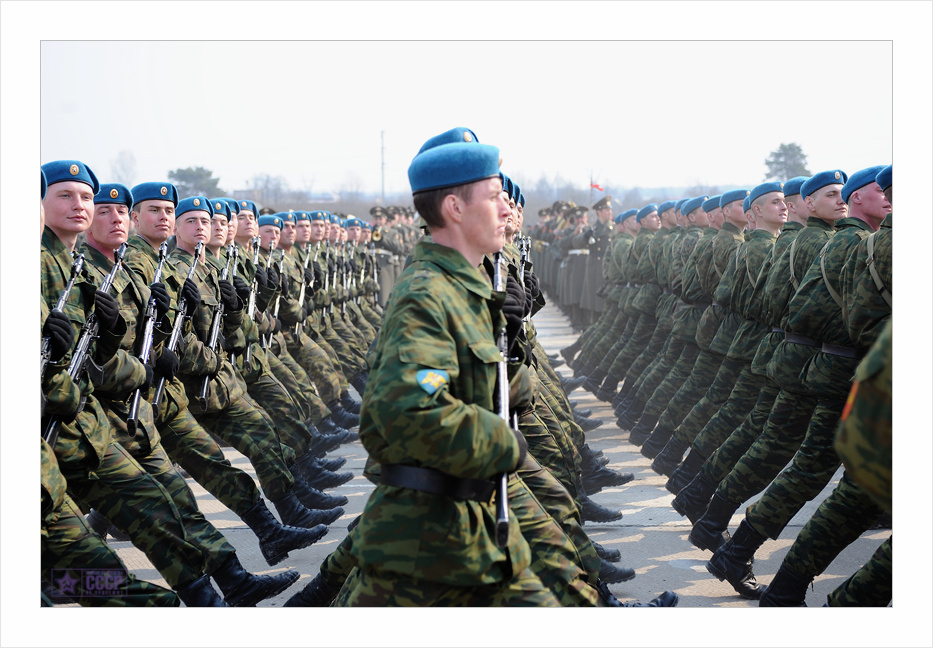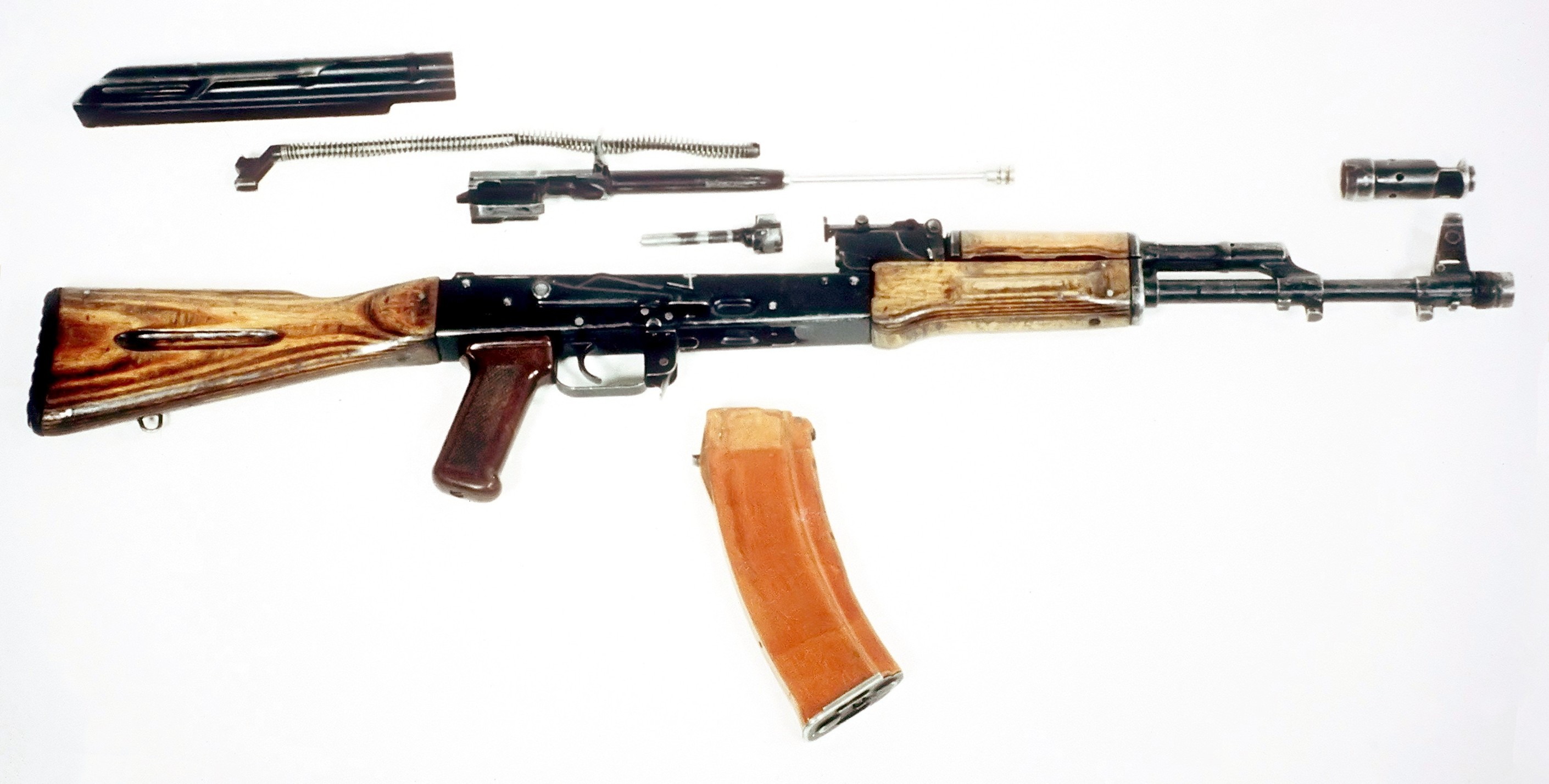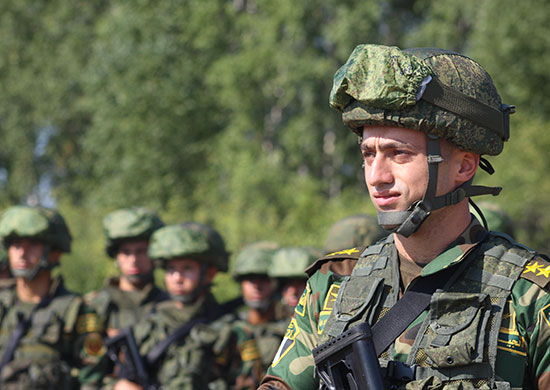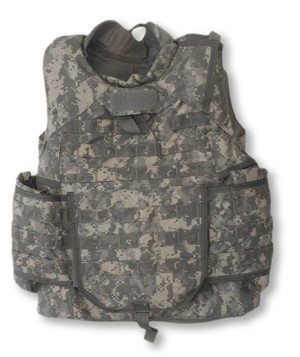|
6B23 Ballistic Vest
6B23 (Russian language, Russian: 6Б23) is a ballistic vest of the Armed Forces of the Russian Federation. Introduced in 2003, it had been the standard issued body armor of the Russian army until the adoption and mass production of 6B45 in around 2015. It is still issued to reserve Russian units and certain separatist militias in Ukraine, mainly due to being superseded by Ratnik (program), RATNIK. Background 6B23 was designed by NPP KlASS and introduced in 2003 to supplement and potentially replace older body armor in Russian service. A range of body armors were introduced in the previous decade (6B11, 6B12, 6B13, 6B17, 6B18) but they never became universally adopted in Russian army. 6B23 is no longer being procured, due to adoption of newer vests, but NPP KlASS continues to produce Korund-VM vests, which are essentially modernized 6B23s. Technical details 6B23 ballistic vest comes in several variants. A characteristic feature of the new vest is improved ergonomics and a mod ... [...More Info...] [...Related Items...] OR: [Wikipedia] [Google] [Baidu] |
Russian Servicemen During Tsentr-2011
Russian(s) refers to anything related to Russia, including: *Russians (, ''russkiye''), an ethnic group of the East Slavic peoples, primarily living in Russia and neighboring countries *Rossiyane (), Russian language term for all citizens and people of Russia, regardless of ethnicity *Russophone, Russian-speaking person (, ''russkogovoryashchy'', ''russkoyazychny'') *Russian language, the most widely spoken of the Slavic languages *Russian alphabet *Russian cuisine *Russian culture *Russian studies Russian may also refer to: *Russian dressing *''The Russians'', a book by Hedrick Smith *Russian (comics), fictional Marvel Comics supervillain from ''The Punisher'' series *Russian (solitaire), a card game *Russians (song), "Russians" (song), from the album ''The Dream of the Blue Turtles'' by Sting *"Russian", from the album ''Tubular Bells 2003'' by Mike Oldfield *"Russian", from the album ''Robot Face, '' by Caravan Palace *Nik Russian, the perpetrator of a con committed in 2002 *Th ... [...More Info...] [...Related Items...] OR: [Wikipedia] [Google] [Baidu] |
Flora Camouflage
Flora (Russian: Флора, sometimes erroneously called VSR-98, which stands for ''Vooruzhennyye sily Rossii'' or Russian Armed Forces 1998.) is a military camouflage pattern formerly used by the Russian Armed Forces. The pattern has some design similarities with the Butan and Tiger stripe camo. History Flora came as a replacement for the "Barvikha" camouflage - the name of the R&D program. The pattern did not have an official name, so popular nicknames like "vertikalka" (vertical), berezka (birch), VSR-93 and so on appeared. Flora was adopted into the Armed Forces of the Russian Federation in 1998. The camo was last seen with so-called pro-Moscow Crimean auxiliaries during the Annexation of Crimea by the Russian Federation and with some Russian troops in the War in Donbas. Design Flora is optimised for an environment typical of central Russia Central Russia is, broadly, the various areas in European Russia. Historically, the area of Central Russia varied b ... [...More Info...] [...Related Items...] OR: [Wikipedia] [Google] [Baidu] |
Military Equipment Introduced In The 2000s
A military, also known collectively as armed forces, is a heavily armed, highly organized force primarily intended for warfare. It is typically authorized and maintained by a sovereign state, with its members identifiable by their distinct military uniform. It may consist of one or more military branches such as an army, navy, air force, space force, marines, or coast guard. The main task of the military is usually defined as defence of the state and its interests against external armed threats. In broad usage, the terms ''armed forces'' and ''military'' are often treated as synonymous, although in technical usage a distinction is sometimes made in which a country's armed forces may include both its military and other paramilitary forces. There are various forms of irregular military forces, not belonging to a recognized state; though they share many attributes with regular military forces, they are less often referred to as simply ''military''. A nation's military may f ... [...More Info...] [...Related Items...] OR: [Wikipedia] [Google] [Baidu] |
Little Green Men (Russo-Ukrainian War)
Little green men (russian: зелёные человечки, translit= zelyonye chelovechki; uk, зелені чоловічки, translit= zeleni cholovichky; pl, zielone ludziki}) are masked soldiers of the Russian Federation in unmarked green army uniforms and carrying modern Russian military weapons and equipment, who appeared during the Russo-Ukrainian War in 2014. The term first arose during the occupation of Crimea by the Russian Federation, a period from late February to March 2014, when such forces occupied and blockaded the Simferopol International Airport, most military bases in Crimea, and the parliament in Simferopol. The term also sometimes used to refer to Russian troops during the War in Donbas, as the Kremlin denied their official involvement or presence of their troops in the region, and they wore unmarked uniforms or disguised themselves as pro-Russian separatists. Russian media referred to them with the euphemism "polite people" (russian: вежл ... [...More Info...] [...Related Items...] OR: [Wikipedia] [Google] [Baidu] |
SVD (rifle)
The SVD (russian: Сна́йперская Винто́вка систе́мы Драгуно́ва образца́ 1963 года, lit=Sniper Rifle, System of Dragunov, Model of the Year 1963, translit=Snáyperskaya Vintóvka sistém'y Dragunóva obraz'tsá 1963 goda), GRAU index 6V1, is a semi-automatic marksman rifle chambered in the fully-powered 7.62×54mmR cartridge, developed in the Soviet Union. The SVD was designed to serve a squad support role to provide precise long-range engagement capabilities to ordinary troops following the Warsaw Pact adoption of the 7.62×39mm intermediate cartridge and assault rifles as standard infantry weapon systems. At the time, NATO used battle rifles chambered in 7.62×51mm NATO as standard infantry weapon systems and had not yet adopted an intermediate cartridge and assault rifle of their own, allowing them to outrange their Warsaw Pact counterparts. It was developed through 1958–1963 and selected as the winner of a contest that ... [...More Info...] [...Related Items...] OR: [Wikipedia] [Google] [Baidu] |
M16 Rifle
The M16 rifle (officially designated Rifle, Caliber 5.56 mm, M16) is a family of military rifles adapted from the ArmaLite AR-15 rifle for the United States military. The original M16 rifle was a 5.56×45mm automatic rifle with a 20-round magazine. In 1964, the M16 entered US military service and the following year was deployed for jungle warfare operations during the Vietnam War. In 1969, the M16A1 replaced the M14 rifle to become the US military's standard service rifle.Urdang, p. 801. The M16A1 incorporated numerous modifications including a bolt-assist, chrome-plated bore, protective reinforcement around the magazine release, and revised flash hider. In 1983, the US Marine Corps adopted the M16A2 rifle and the US Army adopted it in 1986. The M16A2 fires the improved 5.56×45mm (M855/SS109) cartridge and has a newer adjustable rear sight, case deflector, heavy barrel, improved handguard, pistol grip and buttstock, as well as a semi-auto and three-round burst fire ... [...More Info...] [...Related Items...] OR: [Wikipedia] [Google] [Baidu] |
AK-74
The AK-74 ( Russian: , tr. ''Avtomat Kalashnikova obraztsa 1974 goda'', lit. 'Kalashnikov assault rifle model 1974) is an assault rifle designed by small arms designer Mikhail Kalashnikov in 1974. While primarily associated with the Soviet Union, it has been used by multiple states throughout the 20th century and onwards. It is chambered for the 5.45×39mm cartridge, which replaced the 7.62×39mm cartridge of Kalashnikov's earlier automatic weapons for the Soviet armed forces. The rifle first saw service with Soviet forces in the Afghanistan conflict from 1979 onwards. The head of the Afghan bureau of the Inter-Services Intelligence (ISI), the intelligence agency of Pakistan, claimed that America's Central Intelligence Agency (CIA) paid $5,000 for the first AK-74 captured by the Afghan mujahideen during the Afghan-Soviet War. , most countries of the former Soviet Union use the rifle. Licensed copies were produced in Bulgaria (AK-74, AKS-74 and AKS-74U), and in the form ... [...More Info...] [...Related Items...] OR: [Wikipedia] [Google] [Baidu] |
Makarov Pistol
The Makarov pistol or PM ( rus, Пистоле́т Мака́рова, r=Pistolét Makárova, p=pʲɪstɐˈlʲet mɐˈkarəvə, t=Makarov's Pistol) is a Soviet semi-automatic pistol. Under the project leadership of Nikolay Fyodorovich Makarov, it became the Soviet Union's standard military and Militsiya side arm in 1951. Development Shortly after the Second World War, the Soviet Union reactivated its plans to replace the TT pistols and Nagant M1895 revolvers. The adoption of the future AK assault rifle relegated the pistol to a light, handy self-defense weapon. The TT was unsuited for such a role, as it was heavy and bulky. Also, the Tokarev pistols omitted a safety and magazines were deemed too easy to lose. As a result, in December 1945, two separate contests for a new service pistol were created, respectively for a 7.62mm and 9mm pistol. It was later judged that the new 9.2×18mm cartridge, designed by B. V. Semin, was the best round suited for the intended role. The lower ... [...More Info...] [...Related Items...] OR: [Wikipedia] [Google] [Baidu] |
TT Pistol
The TT-30,, "7.62 mm Tokarev self-loading pistol model 1930", TT stands for Tula-Tokarev) commonly known simply as the Tokarev, is an out-of-production Soviet semi-automatic pistol. It was developed in 1930 by Fedor Tokarev as a service pistol for the Soviet military to replace the Nagant M1895 revolver that had been in use since the Russian Empire, though it ended up being used in conjunction with, rather than replacing, the M1895. It served until 1952, when it was replaced by the Makarov pistol. Development In 1930, the Revolutionary Military Council approved a resolution to test new small arms to replace its aging Nagant M1895 revolvers. During these tests, on 7 January 1931, the potential of a pistol designed by Fedor Tokarev was noted. A few weeks later, 1,000 TT-30s were ordered for troop trials, and the pistol was adopted for service in the Red Army. The TT-30 was manufactured between 1930 and 1936, with about 93,000 being produced. Even as the TT-30 was being put i ... [...More Info...] [...Related Items...] OR: [Wikipedia] [Google] [Baidu] |
EMR Camouflage
EMR (); in English Universal Camouflage Colourway, is a military camouflage pattern in use by the Russian Armed Forces. It is sometimes referred to by the unofficial nicknames RUSPAT and Digital Flora. Designed and introduced in 2008, the EMR camouflage replaced the ''Flora'' camouflage pattern on the Russian military uniforms. History This camouflage appeared in 2008 (accepted for supply a year later), after a fundamental decision was made to change ''Flora''. Initially, it was assumed that since "Flora" roughly corresponds to the American Woodland, which in the US Armed Forces was changed to digital camouflages, then the Russian Armed Forces should keep up with this process. The creation of the EMR was heavily influenced by the German Flecktarn camouflage, the developers of which managed to "combine the incompatible": small spots that perform an imitation function are combined in this color scheme so that they form groups of large spots that perform a deforming function. Th ... [...More Info...] [...Related Items...] OR: [Wikipedia] [Google] [Baidu] |
Ratnik (program)
Ratnik (russian: Ратник; Warrior) is a Russian future infantry combat system. Some components, including the communication systems and night vision technologies, have extremely limited military distribution. It is designed to improve the connectivity and combat effectiveness of combat personnel in the Russian Armed Forces. Improvements include modernised body armour, a helmet with a special eye monitor (thermal, night vision monocular, flashlight), communication systems, and special headphones. It includes 10 subsystems and 59 individual items. An improved "Sotnik" system is expected in 2025. History The Ratnik was first to be reported to be used during the Annexation of Crimea by the Russian Federation in 2014. There were also reports that Russian troops have tested Ratnik components in combat operations. In August 2019, it was reported that Ratnik has been tested by soldiers from Belarus, Vietnam, Kyrgyzstan, China, Laos, Mongolia, Pakistan and Uzbekistan. In July 20 ... [...More Info...] [...Related Items...] OR: [Wikipedia] [Google] [Baidu] |
Bulletproof Vest
A bulletproof vest, also known as a ballistic vest or a bullet-resistant vest, is an item of body armor that helps absorb the impact and reduce or stop penetration to the torso from firearm-fired projectiles and fragmentation from explosions. The vest may come in a soft form, as worn by many police officers, prison guards, security guards, and some private citizens, used to protect against stabbing attacks or light projectiles, using metallic or para-aramid components. Soldiers, police tactical units, marines, and special operations forces wear hard armors, either in conjunction with soft armor or alone, to protect against rifle ammunition or fragmentation. History Early modern era In 1538, Francesco Maria della Rovere commissioned Filippo Negroli to create a bulletproof vest. In 1561, Maximilian II, Holy Roman Emperor is recorded as testing his armor against gun-fire. Similarly, in 1590 Sir Henry Lee expected his Greenwich armor to be "pistol proof". Its actual effectivene ... [...More Info...] [...Related Items...] OR: [Wikipedia] [Google] [Baidu] |








.jpg)

